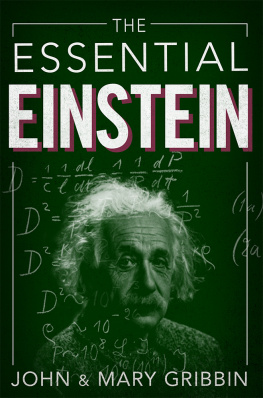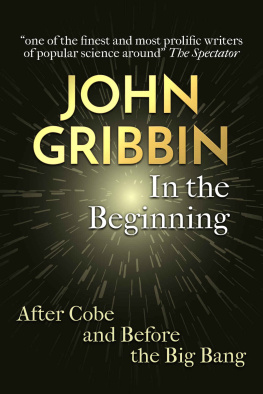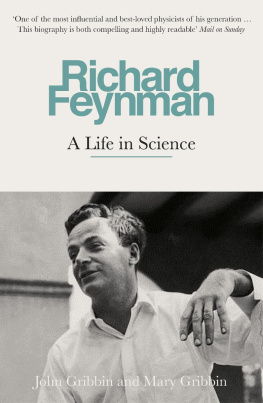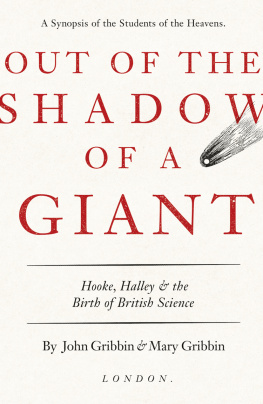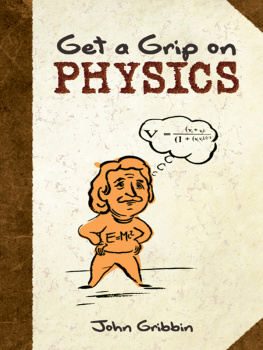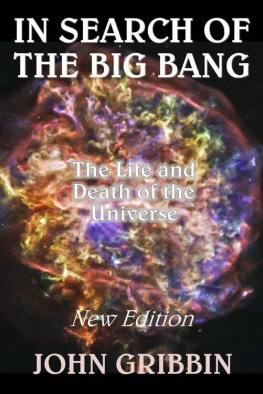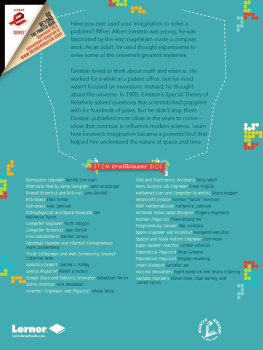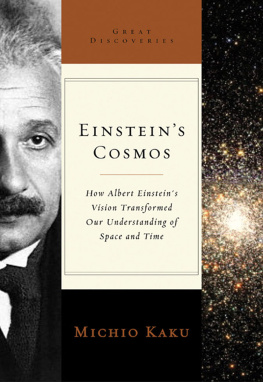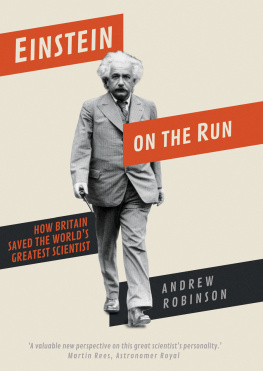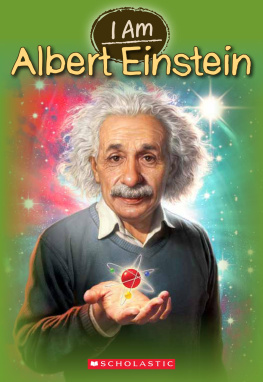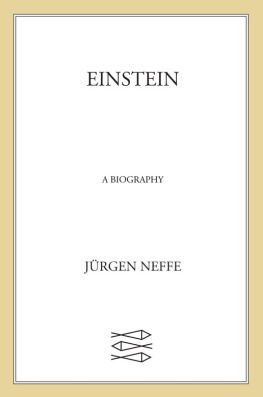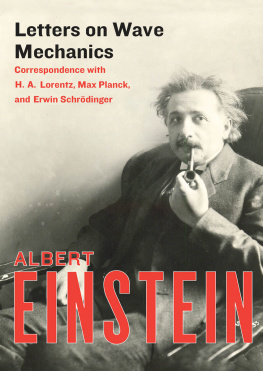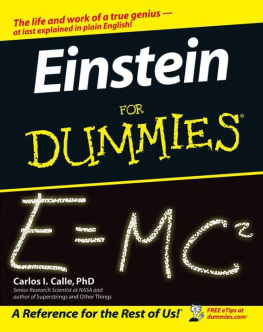THE ESSENTIAL EINSTEIN
In the same series by the same authors:
Halley in 90 minutes
Curie in 90 minutes
Darwin in 90 minutes
forthcoming titles
Faraday in 90 minutes
Galileo in 90 minutes
Mendel in 90 minutes
Newton in 90 minutes
John and Mary Gribbin
The Essential Einstein
Constable London
First published in Great Britain 1997
by Constable & Robinson Ltd.
5556 Russell Square
London WC1B 4HP
www.constablerobinson.com
Copyright John and Mary Gribbin 1997
The right of John and Mary Gribbin to be identified
as authors of this work has been asserted by them
in accordance with the Copyright,
Designs and Patents Act 1988
ISBN 0 09 477130 8
eISBN 978 1 47 211604 8
Set in Linotype Sabon by
Rowland Phototypesetting Ltd,
Bury St Edmunds, Suffolk
Printed in Great Britain by
St Edmundsbury Press Ltd,
Bury St Edmunds, Suffolk
A CIP catalogue record of this book
is available from the British Library
Cover copyright Constable & Robinson.
Contents
Einstein in context
At the end of the nineteenth century, physics had seemed on the verge of completion. Two great theories held sway. Isaac Newtons theory of gravity, combined with his laws of mechanics, explained how material objects move through the Universe, how planets orbit the Sun, how pendulums swing and how balls roll down inclined planes. Even the behaviour of gases, liquids and solids could be explained in terms of hard, indivisible atoms bouncing against one another like billiard balls and recoiling in accordance with Newtons laws.
The other great theory, developed only in the second half of the nineteenth century, was James Clerk Maxwells theory of electromagnetism. In a set of just four equations, the greatest achievement of physics since the time of Newton himself, Maxwell had provided a complete description of all electric and magnetic phenomenon. It not only explained how two electrically charged balls repel or attract one another, and why a compass needle points north, but also interpreted the behaviour of light in terms of an electromagnetic wave, and predicted other forms of electromagnetic radiation, soon discovered and named radio waves.
Its worth emphasizing that gravity and electromagnetism were the only two basic types of forces that were known indeed, the only two that anybody had any inkling existed in the nineteenth century. So if you had a perfectly satisfactory theory of gravity, and a perfectly satisfactory theory of electromagnetism, plus a perfectly satisfactory set of laws of mechanics to describe how things like billiard-ball atoms or the pendulum of a clock moved, what more did you need? For example, any physicist who wanted to work out how the pressure of gas in a sealed chamber would change because the temperature changed (a very useful thing to be able to do in the era of steam-driven industry) could do so using these known laws of physics. Anyone who wanted to work out the details of laying a telegraph cable across the Atlantic seabed to establish a communications link between Europe and America (the original electronic superhighway) could do so with the aid of Maxwells equations, confident that it would work and provide a good return on the investment. Indeed, Maxwell himself made a fortune from the patents on just such a transatlantic cable. And it is still true today that just about everything we encounter in the everyday physical world, the world of common sense, can be described entirely adequately in terms of the two great theories of Newton and Maxwell, plus Newtons laws of mechanics.
Things started to fall apart when physicists began to probe outward from the world of common sense, in both directions. In the mid-1890s they discovered that the atom is not indivisible, after all: J.J. Thomson, in Cambridge, chipped bits off it and named the bits electrons. And there were some odd puzzles about the behaviour of light. One was the question of how light travelled as a wave. The obvious analogy is with ripples on a pond, but there it is the water that moves to make the ripples. What is doing the waving when a light wave passes by?
For a time, physicists seriously believed in the existence of something called the aether, which filled the entire Universe and provided the medium for light to travel through (by the way, when physicists talk of light, they mean any kind of electromagnetic radiation). If the Universe were filled with the aether, it would have to be a very tenuous sort of stuff in order to allow the Earth and other bodies to pass through it unimpeded. On the other hand, the speed of a wave through a medium (such as sound in air) increases as the stiffness and density of the medium increase. Sound travels through a bar of steel faster than it does through the air. Since the speed of light is very high (300 million metres per second), the aether would have to be incredibly stiff and unyielding to allow light waves to travel at such a speed.
On top of that, a series of extraordinarily careful measurements carried out by A.A. Michelson and Edward Morley in the 1880s failed to find any evidence that the speed of light varies according to whether the Earth is moving upstream or downstream through the aether. Indeed, there was no evidence at all that the aether existed. At the end of the nineteenth century many scientists were worried about this absence of evidence for the aether, but Einstein was not one of them. As we shall see, he arrived at his special theory of relativity from a different jumping-off point. He later said that at the time he developed that theory he had not heard of the MichelsonMorley experiment.
The last and, as it turned out, the most profound puzzle concerned the interaction of light and matter. The theory of light worked perfectly (except for the puzzle about the aether); the theory of matter worked perfectly (as far as it had been tested, a hundred years ago). But the theory of how matter, in the form of atoms, actually produced light did not work at all. It was obvious to physicists in the 1890s that, just as you can make ripples on a pond by wiggling your fingers about in the water, the electromagnetic waves that make up light must be produced by vibrations, or oscillations, of electrically charged entities within atoms (so they welcomed the discovery of electrons). But the classical mechanics of Newton said that in such circumstances the charged entities should radiate away enormous amounts of energy very suddenly at very short wavelengths, in the blue and ultraviolet part of the spectrum. This was known as the ultraviolet catastrophe. It was circumvented, right at the end of the nineteenth century, by Max Planck, who, more in despair than anything else, suggested that light could be emitted only in lumps of a certain size, which he called quanta. This prevented atoms radiating as much ultraviolet light as Newtonian mechanics would have allowed, and (rather artificially) gave an equation describing the emission of light (now known as the black-body curve) which matched the observations.
But though Planck had offered the idea of light being radiated in discrete quanta, he still thought of light purely as a wave phenomenon. In 1900, nobody at all thought that light really existed in little packets as particles, now called photons. And that is where Albert Einstein came on the scene.
Life and work
Einstein was born in Ulm, in Germany, on 14 March 1879. He didnt stay there long, for in the early summer of 1880 the family moved to Munich, where Alberts father, Hermann, hoped to establish a successful business. Hermann had already run an unsuccessful electrochemical enterprise in Ulm, bankrolled by the parents of his wife, Pauline. It was Hermanns younger brother, Jakob, who suggested the move to Munich in search of success, and Jakob became a partner in the business. He lived with Hermann, Pauline and young Albert in a large house with a pleasant garden on the outskirts of Munich.
Next page
